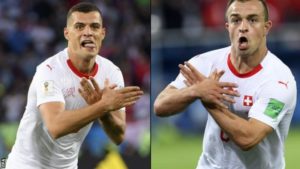
 The World Cup is being played now in Russia and it is offering a lot of entertainment for soccer [football] fans. It’s also interesting from a cross-cultural perspective, as teams come from around the world this year, including, for the first time 4 Arab nations (Tunisia, Saudi Arabia, Egypt and Morocco) and 3 Nordic entrants (Iceland, Sweden and Denmark). This represents a variety of cultures, which makes for interesting interactions.
The World Cup is being played now in Russia and it is offering a lot of entertainment for soccer [football] fans. It’s also interesting from a cross-cultural perspective, as teams come from around the world this year, including, for the first time 4 Arab nations (Tunisia, Saudi Arabia, Egypt and Morocco) and 3 Nordic entrants (Iceland, Sweden and Denmark). This represents a variety of cultures, which makes for interesting interactions.
One of the cultural manifestations is in nonverbal communication. There is body language galore, with players using gestures and grimaces widely, often to protest referee actions or to indicate their pain after being fouled. Many players are skilled at pantomime, “diving” or “flopping” at the merest touch from an opposing player. Several players have shown particular talent in that area.
What has generated the most attention and controversy has not been related to the play on the field, but rather to nonverbal actions with political motivations. Two players for Switzerland, Granit Xhaka and Xherdan Shaqiri made a hand gesture, the double-headed eagle, widely understood to symbolize the Albanian flag. Both players are ethnic Albanians, originally from Kosovo, and they made the gesture in a match against Serbia, the country responsible for a crackdown on the Albanian population in Kosovo which ended only with Nato military intervention in 1999.
Serbians were angry over the gesture; the Serbian Football Association filed a complaint in which they labeled the use of the gesture “provocative”.
Serbians have their own nationalist gesture, the “three-finger salute”, which Serbian player Aleksandar Kolarov displayed in celebration after scoring a goal in a game against Costa Rica.
Meanwhile, the team from the former Yugoslavia that is still in the tournament is neither Serbia nor Kosovo (although the Swiss team is in) but Croatia – so far no nationalist gestures from that team.


This is really interesting! I had not realized that this occurred over the World Cup, nor did I realize the implications one nonverbal gesture could have across cultures and that it can even have historical significance.